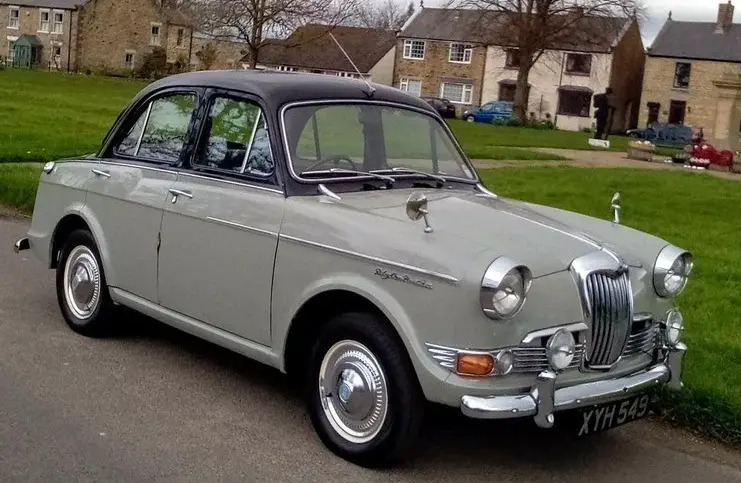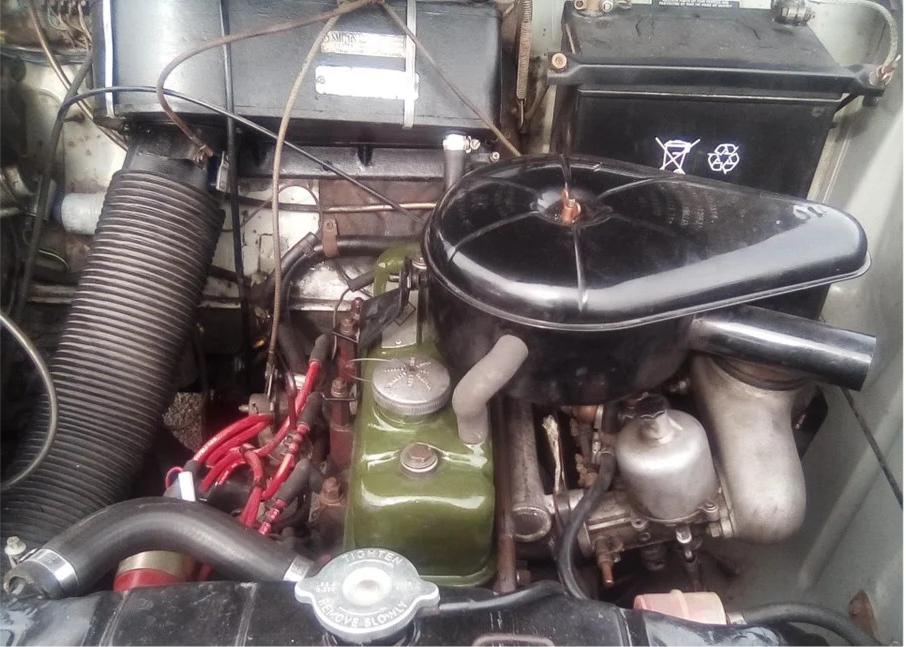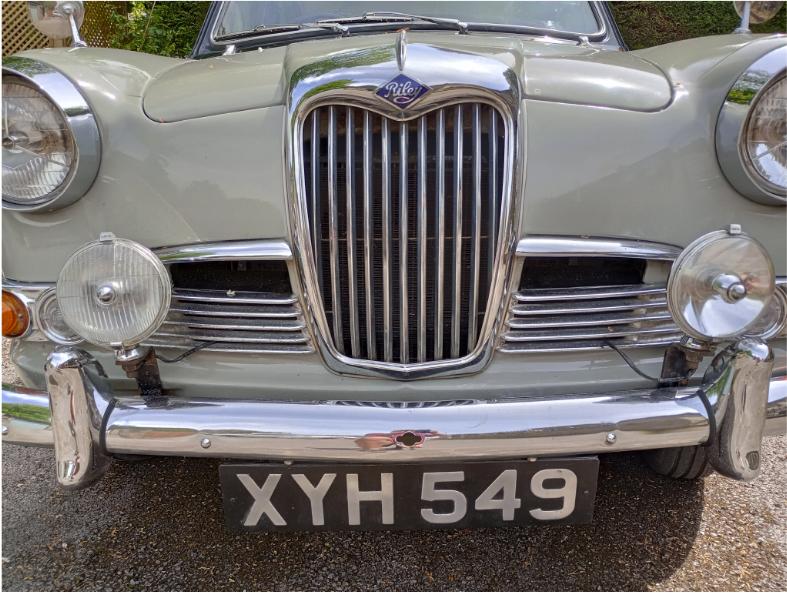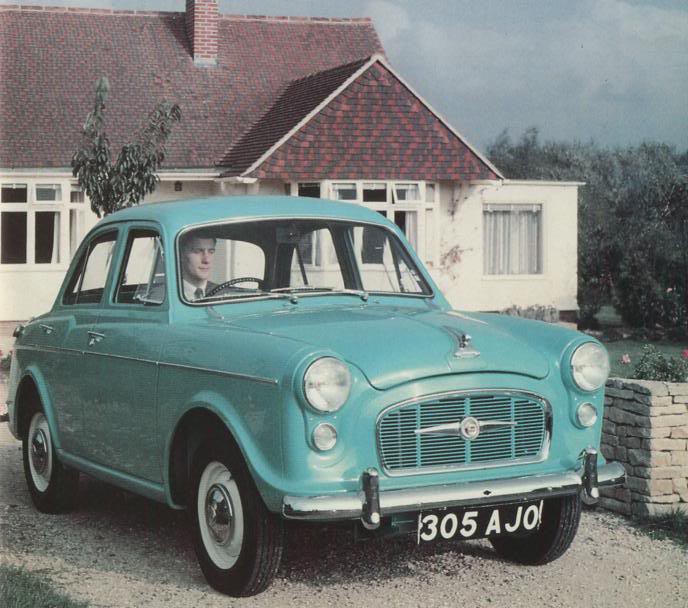
Last updated 4th January, 2025

1959 Riley One-Point-Five
In 1959 the list price was £863.17.0, a third of which was purchase tax.

The Riley has twin S.U. carbs and an output of 68 hp. In the late fifties, this was fairly powerful for a small saloon car. This is essentially the same engine as in most MGA sports cars and the rather larger MG and Riley Farina saloon cars of the same period.
Interestingly, the Ford Capri 1.6 of the early eighties had a poorer power to weight ration than the Riley One-Point-Five of the early sixties.

My car, a Series One built in 1959, was first sold by J. James (London) Ltd., Riley Distributers in NW5. For reasons unknown it was laid up with just 17,000 miles on the clock and secreted away in a lock up garage.

After discovery decades later, when the long abandoned lock ups were about to be demolished, it was re-commissioned in 2002.
It now has a later, Series III engine and slightly changed colour scheme of two tone Birch grey and black (roof, door tops and boot) with light green interior (also from a series III). Although much restored over the years, it is very standard. Even the two tone paintwork was quite common and many cars left the factory in optional two tone, though perhaps not this actual combination.

The One-Point-Five and its less powerful Wolseley 1500 sibling were introduced in 1957, when their styling was in keeping with the larger Morris Oxford and Austin Cambridge BMC saloons. With the introduction of the Farina style cars right across the BMC range, from 1959, and indeed the front wheel drive 1100s from 1962, styling left these two behind and sales dropped in the early sixties until they were discontinued in 1965.
Origin of the model
 When BMC was formed, a
replacement for the Morris Minor was initially considered
necessary and a development project got under way. The plan was to design a
slightly larger, more comfortable and slightly more powerful car incorporating
the floor pan, suspension and steering from the original Minor.
When BMC was formed, a
replacement for the Morris Minor was initially considered
necessary and a development project got under way. The plan was to design a
slightly larger, more comfortable and slightly more powerful car incorporating
the floor pan, suspension and steering from the original Minor.
At some stage, it was decided not to replace the Minor after all but to build on its popularity and success with a substantially revised model. The Morris Minor became the Morris Minor 1000, with more modern bodywork (one piece windscreen and wrap around rear screen) and larger ĎAí Series engine (initially 948cc, then 1098cc). The Minor 1000 survived for many more years until it was eventually succeeded by the Morris Marina in the 1970s.
To avoid wasting the planning effort and investment, the otherwise redundant project was repurposed to create a new market where there was little competition: the up-market small saloon. It became the Riley One-Point-Five and the Wolseley 1500 with the larger 1489cc 'B' series engines.
With
their humble and unusual origins these cars were always something of a niche model, running
alongside not only the Morris Minor but from 1959 also the various BMC Farina styled cars
and, from 1962, the new front wheel drive saloons.
The One-Point-Five was very much a minor player
in the Sports Saloon market, dominated by the Sunbeam Rapier and MG Magnette.
Less than 40,000 One-Point-Fives were produced in the eight
year run.
The Wolseley 1500 (sedate, Gentlemanís Saloon?) was rather more successful with over 100,000 produced. This was partly due to pricing and the existence of a Fleet version at an even lower price.
Back to My Cars & Bikes